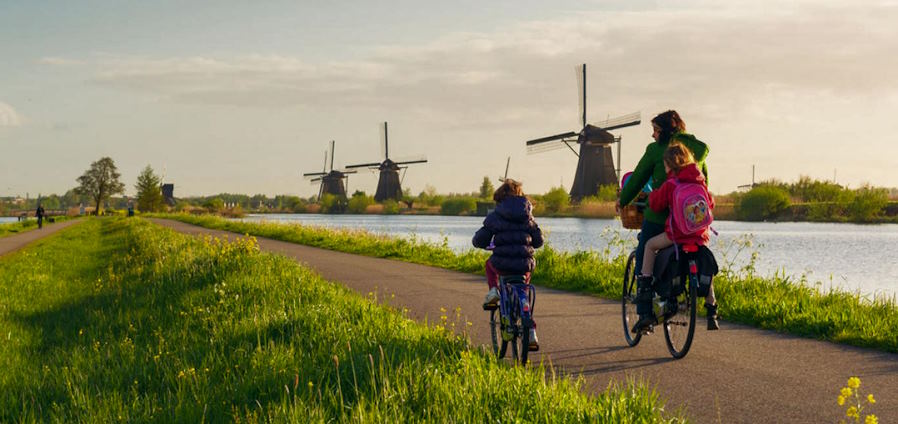The Role of Cultural Tourism in Sustainable Development
Cultural tourism has emerged as a powerful catalyst for sustainable development, playing a pivotal role in preserving cultural heritage, fostering economic growth, and promoting environmental conservation. In an era marked by globalization and rapid urbanization, the need to safeguard and celebrate diverse cultural traditions has become increasingly vital. Simultaneously, the pursuit of sustainable development has gained prominence, emphasizing the imperative to balance economic growth with environmental and social responsibility.
Fostering Economic Growth
Cultural tourism not only preserves and celebrates heritage but also serves as a powerful engine for economic growth. By attracting visitors from around the world, it generates a range of economic benefits that uplift communities and fuel local development. This section explores the economic advantages of cultural tourism, its role in fostering local community growth, and provides real-life examples of its transformative impact.

One of the key economic benefits of cultural tourism is the creation of employment opportunities and income generation. As tourists flock to cultural destinations, the demand for various services such as accommodation, transportation, food, and entertainment skyrockets. Consequently, local businesses thrive, leading to job creation across a spectrum of sectors. Hotels, restaurants, tour guides, artisans, and craftsmen all benefit from the influx of visitors, stimulating economic activity and improving livelihoods within the community.
Moreover, cultural tourism generates revenue from a myriad of tourism-related activities. Museums, heritage sites, cultural performances, and traditional events become significant revenue generators. Entrance fees, ticket sales, merchandise, and souvenirs contribute to the local economy, thereby bolstering the financial sustainability of cultural institutions and supporting ongoing preservation efforts.
Beyond the direct economic benefits, cultural tourism plays a pivotal role in local community development. It provides a platform for supporting local businesses and artisans, promoting entrepreneurship, and preserving traditional crafts and practices. When tourists actively engage with local artisans, they have the opportunity to purchase authentic handmade goods, thereby directly supporting the livelihoods of local communities. This not only preserves traditional skills but also empowers communities economically.
Additionally, cultural tourism often leads to improvements in infrastructure and services within communities. The increased demand for amenities necessitates the development of better transportation networks, accommodation facilities, and utilities. As a result, local communities receive infrastructure upgrades that not only cater to tourists but also enhance the overall quality of life for residents.
Real-life case studies illustrate the tangible economic growth brought about by cultural tourism. In the ancient city of Petra, Jordan, the preservation and promotion of its cultural heritage have transformed the local economy. The influx of tourists has created employment opportunities for the local community, while tourism revenue has been reinvested in infrastructure development and educational initiatives.
In Bali, Indonesia, cultural tourism has been a driving force behind the island’s economic prosperity. Balinese art, dance, and traditional ceremonies attract visitors from all corners of the globe, fueling the growth of local businesses, including handicraft production, hospitality, and cultural experiences.

Promoting Environmental Conservation
While tourism offers opportunities for cultural exchange and economic growth, it also carries the potential to impact natural resources and ecosystems. The preservation of our environment is paramount for sustainable development. In this section, we explore the environmental impact of tourism, the role of cultural tourism in promoting environmental conservation, and highlight case studies showcasing successful efforts in preserving the environment within cultural tourism destinations.
Environmental impact of tourism
Tourism, if not managed responsibly, can have detrimental effects on natural resources and ecosystems. The increased demand for accommodations, transportation, and recreational activities can lead to deforestation, habitat destruction, pollution, and overuse of water resources. Furthermore, the carbon footprint resulting from transportation emissions contributes to climate change, affecting fragile ecosystems and wildlife habitats. Recognizing these potential negative impacts is crucial in implementing measures to mitigate them.
Responsible and sustainable tourism practices are of utmost importance. By minimizing waste, conserving energy, and adopting eco-friendly initiatives, the tourism industry can significantly reduce its environmental footprint. Sustainable practices such as waste recycling, use of renewable energy sources, and water conservation methods are essential for preserving the natural environment and promoting the long-term sustainability of cultural tourism destinations.
Role of cultural tourism in promoting environmental conservation
Cultural tourism provides an excellent platform for promoting environmental education and awareness. Visitors engaging with local communities and cultural sites have the opportunity to learn about the significance of the environment in cultural preservation. Cultural tourism destinations can offer guided nature walks, educational workshops, and interpretive programs to highlight the importance of environmental conservation and inspire visitors to become stewards of the environment.
Case studies or examples showcasing environmental conservation efforts in cultural tourism destinations
Environmental Conservation Efforts in Cultural Tourism Destinations
| Cultural Tourism Destination | Environmental Conservation Efforts |
| The Galapagos Islands, Ecuador | Strict regulations and visitor quotas to protect biodiversity |
| Conservation programs for endangered species and marine life | |
| Sustainable tourism practices and eco-lodges | |
| Environmental education initiatives for tourists and locals | |
| Kyoto, Japan | Preservation of traditional gardens and forests |
| Promotion of sustainable transportation options | |
| Waste reduction and recycling programs | |
| Protection of cultural landscapes and heritage sites | |
| Costa Rica | Extensive network of national parks and protected areas |
| Eco-tourism initiatives that support local communities | |
| Carbon offset programs and sustainable lodging options | |
| Conservation projects for wildlife and biodiversity |
These case studies exemplify the successful integration of cultural tourism with environmental conservation efforts. The Galapagos Islands’ strict regulations and conservation programs preserve the unique biodiversity of the region. Kyoto’s focus on sustainable transportation and waste reduction ensures the protection of cultural landscapes. Costa Rica’s extensive network of protected areas and eco-tourism initiatives support local communities while conserving wildlife and ecosystems.

